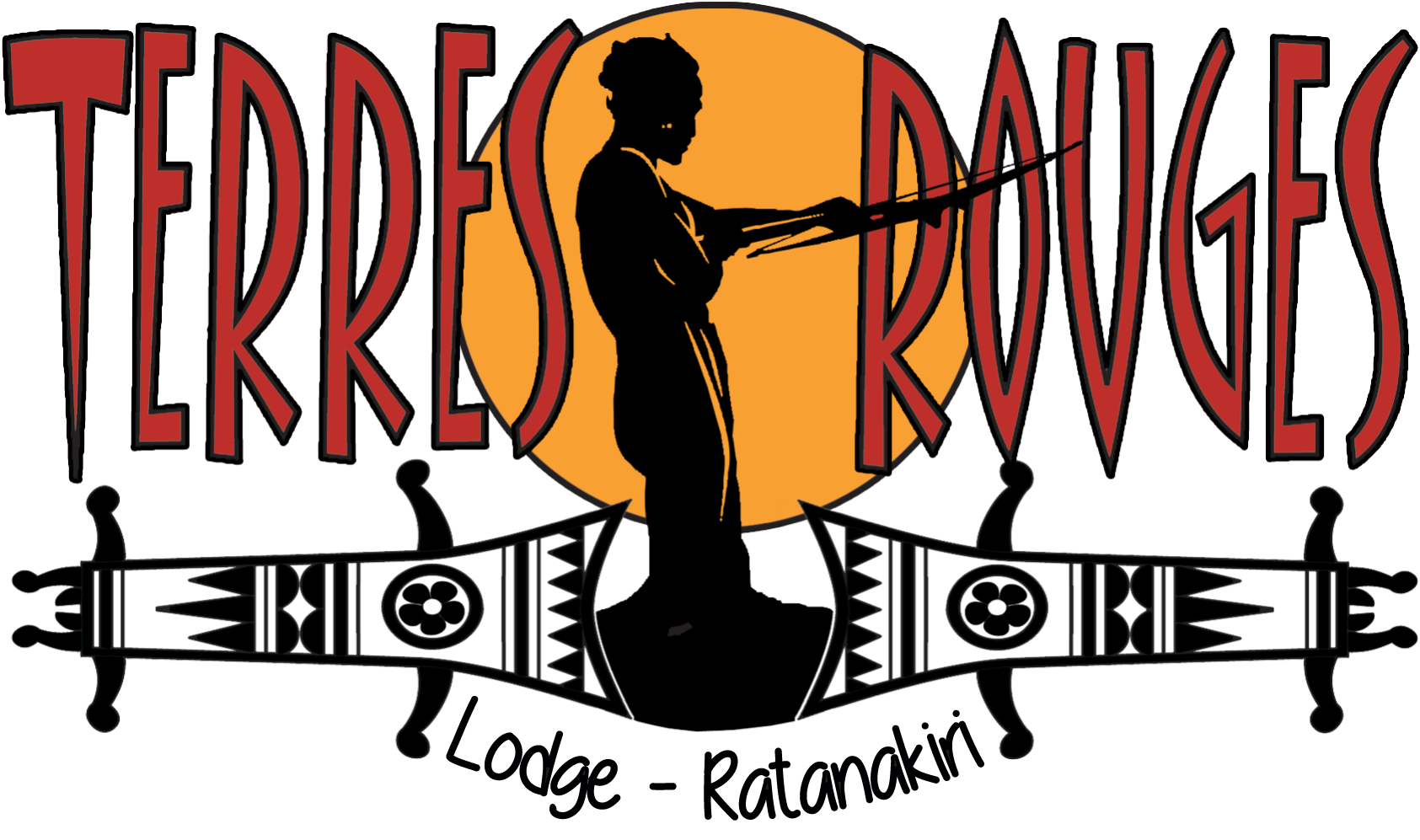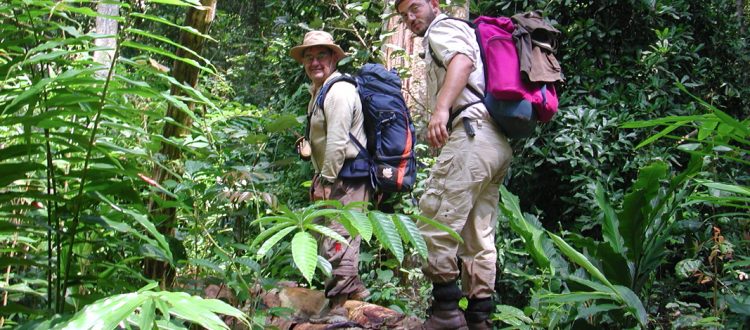Revue de presse – Wall Street Journal
Opening Asia’s Hidden Wilderness
Cambodia is expected to get two million visitors this year. An intrepid few are venturing beyond crowded Angkor Wat to the enchanting jungles and lakes of Ratanakiri province.
Paved roads peter out long before this ramshackle town emerges in the jungle. Beyond it are crater lakes, sun bears and hunter-gatherer hill tribes that are only now starting to interact with the outside world.
Together they make up one of the last frontiers of Asian adventure travel, the vast Cambodian province of Ratanakiri. For decades, the war-torn region of waterfalls and winding jungle paths held a strange allure for travelers, mainly because it was so cut off from the outside world. The trip, by truck and canoe, would take days and sometimes weeks, depending on the weather.
But as Cambodia has opened more widely to the outside world — it expects some two million tourists in 2009 — its northeastern jungles have started to open up, too, even to luxury travelers. Authorities have extended paved roads to within about 60 miles of Banlung, the provincial capital, and new construction is expected to cover the last leg sometime over the next several years. That has cut travel time from Cambodia’s capital, Phnom Penh, to about 10 hours by car and led to significant upgrades in food and lodging.
The Cambodian government is stepping up efforts to promote Ratanakiri, touting it as the « Wild East » in marketing campaigns. Officials cite the region’s ethereal landscapes and its wildlife, including exotic birds, elephants and possibly kouprey, the mysterious and rare wild forest cow believed to live in northern Cambodia and surrounding areas.
Commercial flights used to land in Banlung but were discontinued earlier this decade due to safety concerns; now the lonely airstrip here is more commonly used for motorbike races. Officials are planning to upgrade the airstrip and restore the terminal to once again receive commercial flights. Travel guides in Cambodia are advising adventurous visitors to come soon, rather than wait until large tour groups start arriving.
As for luxury, Ratanakiri is still a far cry from better-known Asian destinations like Bali or Phuket. Upscale travelers can stay at Terres Rouges, a comfortable jungle retreat that arranges safaris, elephant rides and multiday hiking treks for its wealthy American and European clients as well as for non-guests. The owner is Pierre Yves Clais, a former soldier stationed in the region, who ran a guide service in the 1990s and eventually opened the lodge for guests who objected to Banlung’s rough-and-tumble accommodations. Now, his clientèle includes artists, film directors and aficionados of Southeast Asian culture, he says. « When I first opened the place, people said I was crazy, I would die of malaria immediately, » he says. He did get malaria, he says, but he also had a lot of adventures, and eventually he made upgrades to the lodge, adding a spa, a swimming pool and cable TV.
Malaria remains a problem in parts of the region. Roads and other basic infrastructure are still rough, and heat and rain, especially from May to October, can be intense. Before visiting, travelers should consult a physician for advice on antimalarial pills, and they should use mosquito repellent, wear long-sleeved clothing and sleep under mosquito nets when possible.
For some travelers, the precautions only add to the appeal. Cambodia has undergone a massive travel boom in recent years, and international tourists have overwhelmed the country’s more-famous destinations, like Angkor Wat, the renowned complex of ruins further to the west. (Although only about 200 miles away, Angkor Wat is exceptionally difficult to get to directly from Banlung because of the bad roads.) Many jaded travelers find they prefer a sparsely-populated redoubt like Ratanakiri because it offers a better sense of the way Southeast Asia used to be, before so much of it was covered in concrete.
« I thought I was like Indiana Jones, » says Daniel Salmon, a 24-year-old British traveler who stopped in Cambodia on his way to Australia and visited Ratanakiri after hearing about it from other travelers. He spent his time zooming around on a rented motorbike and relaxing at remote swimming holes and waterfalls. « There’s nothing better than going to places no one has been to, » he says.
Not far outside Banlung is Yeak Lom, a serene, circular crater lake hidden in the jungle. Depending on whom you ask, the lake is either a few thousand or 700,000 years old. Either way, it feels timeless, hemmed in by dense forest under a wide blue sky. Cambodian families and foreign visitors gather there throughout the day. Residents have built a wooden deck along the water for lounging, and vendors sell soft drinks and snacks from a clearing nearby. Swimmers can float out into the cool waters, surrounded by nothing but jungle. In the evenings and mornings, a silence settles over the lake that makes it seem otherworldly.
Ratanakiri offers the opportunity to visit some of region’s ethnic tribal groups, including the Cambodian Kreung and Tompuon, with the help of guides hired through Banlung guesthouses. Residents of these hill communities are quickly adopting Western habits — many now own motorbikes and wear T-shirts and baseball caps — but they retain their own dialects and some of their own customs, including the worship of nature spirits. Tribal cemeteries, which are often situated in remote jungle areas and best reached by boat or canoe, have carved totems that look like pre-Columbian artifacts. Village residents generally don’t mind visitors in the cemeteries, but tourists should go only with a guide and a tribal member, and they should show all proper respect, including refraining from touching totems.
On a recent visit to one tribe, I found many older homes were built on stilts from thatch and wood, with rickety, handmade ladders leading up to the front doors. As families shift away from subsistence agriculture and gathering nuts and fruits in favor of raising soybeans and other cash crops, they are encountering money and using it to build far larger homes, many painted in bright blue or other pastel colors.
The Ratanakiri villages receive very few outside visitors, which in many ways makes them more interesting than the colorful but overexposed hill tribe communities in other parts of Southeast Asia, including the famous « long-neck » villages in northern Thailand, which sometimes feature trinket shops, admission tickets and tour buses.
During my visit, a man hung strips of sliced buffalo skin on a line to dry, while children, who seemed nervous at my presence, gathered under stilt houses to watch. Although some residents in the area wear bright red or orange sarongs, the chief arrived wearing shorts, a blue T-shirt and a gold watch. After a short welcome in the community’s meeting house — a dilapidated wooden shack on stilts, with wooden mats for sitting — he showed off the village’s motorbikes and other conveniences, including a stereo.
Tribal communities are rapidly adopting Western-style dwellings and customs, although many older homes on stilts remain.
Visitors to Ratanakiri can also arrange guided hikes into deep jungle realms including Virachay National Park, a wild zone along the Laos border so remote that park rangers have yet to fully catalog its wildlife. Observation cameras hidden around the park have captured images of Asian leopards, among other animals.
Some travelers hew close to Banlung, whose chaotic, giant market sells everything from dead birds to gourds to pig heads. A visit to the town isn’t particularly pleasant or relaxing — motorbikes zoom up and down its red-dirt roads, kicking up a cloud of dust wherever they go — but it is certainly interesting. Gas stations look as if they’re imported from 1930s America, with hand pumps connected to old red fuel barrels. The town’s most prominent landmark is a sculpture towering over the main intersection, with carved creatures looking out from the top.
Just outside of town are waterfalls and swimming holes that can be reached by motorbike or bicycle along dirt tracks winding through forest, rubber plantations and fields overgrown with shoulder-high plants. Visitors also can ride to scenic hilltop overlooks, with views towards Vietnam some 45 miles away.
Before Ratanakiri ripened for tourism, it was a prime nesting ground for insurgencies and militant activity. In the 1960s, it served as a main hideout for the Khmer Rouge, a radical rebel group that went on to commit one of the worst genocides in the 20th century. The area was also a popular refuge for Vietnamese communist soldiers during the Vietnam War, prompting U.S. forces to bomb the region in hopes of flushing them out.
With the return of peace, entrepreneurs began opening guesthouses and restaurants to serve the wildlife enthusiasts and adventure travelers who were starting to show up. Agricultural investors rushed in, too, and in many areas they have plowed over large sections of forest, adding to the urgency to visit Ratanakiri soon before more habitat is destroyed.
« There’s so much untapped tourism here, » says Phil Gordon, a 42-year-old Australian visitor who left the landscape-design business to spend time traveling and ended up in Ratanakiri. He went to the crater lake, toured rubber plantations, shot photographs and read books. When paved roads make it all the way to Banlung, he says, « this place is going to take off. »
How to get there: International tourists typically fly to Phnom Penh, in Cambodia, through Bangkok (on Thai Airways or AirAsia), although there are also direct flights from Hong Kong (Dragonair) and Seoul (Korean Air). From Phnom Penh, buses to Ratanakiri are available but uncomfortable; hire a private taxi ($150-$200 each way), which can be arranged through most major hotels, or set up transport through a local travel agency (see below). The drive takes roughly 10 hours, including a bone-rattling stretch near the end dodging mud pits and dogs. But most of the trip is comfortable, with scenic countryside and places to stop for photos and local cuisine. Tourist visas ($20) are available on arrival in Cambodia for many nationalities, but it’s wise to check with a Cambodian embassy before traveling.
Where to stay: Many upscale travelers stay at Terres Rouges (www.ratanakiri-lodge.com; +855-23-215-651, $85 per night for an air-conditioned suite), a comfortable jungle retreat with elegant hardwood furniture, a large collection of Asian antiques and vintage French maps and prints, and a breezy deck overlooking a small crater lake. It recently added Internet, cable TV, a pool and spa facilities. The Tribal Hotel (+855-75-974-074, $15 per night with air-conditioning), by contrast, feels like it belongs in the Rocky Mountains, circa 1850, with wooden slat floors and mounted deer heads, machetes and farm implements on the walls. Staff members sleep barefoot on sofas in the hallways or slumped over at the check-in counter.
Where to eat: Dining out in Banlung is still an adventure, although that is changing, as a handful of Western-style pubs have opened recently. Gecko Café serves pizza and Cambodian beer in frosty mugs kept ice-cold in a giant freezer. Terres Rouges has an excellent restaurant and bar serving French and Cambodian fare.
What to do: Agencies book tours through the region, though at present usually only on request. Exotissimo Travel (www.exotissimo.com), a big Southeast Asian outfit with offices in Phnom Penh, offers a customized, four-day trip with accommodations at Terres Rouges for roughly $700 per person, including excursions to villages, waterfalls and lava fields. Other sites worth visiting include Yeak Lom, the local crater lake. Travelers can rent motorbikes and arrange guides from most guesthouses.

